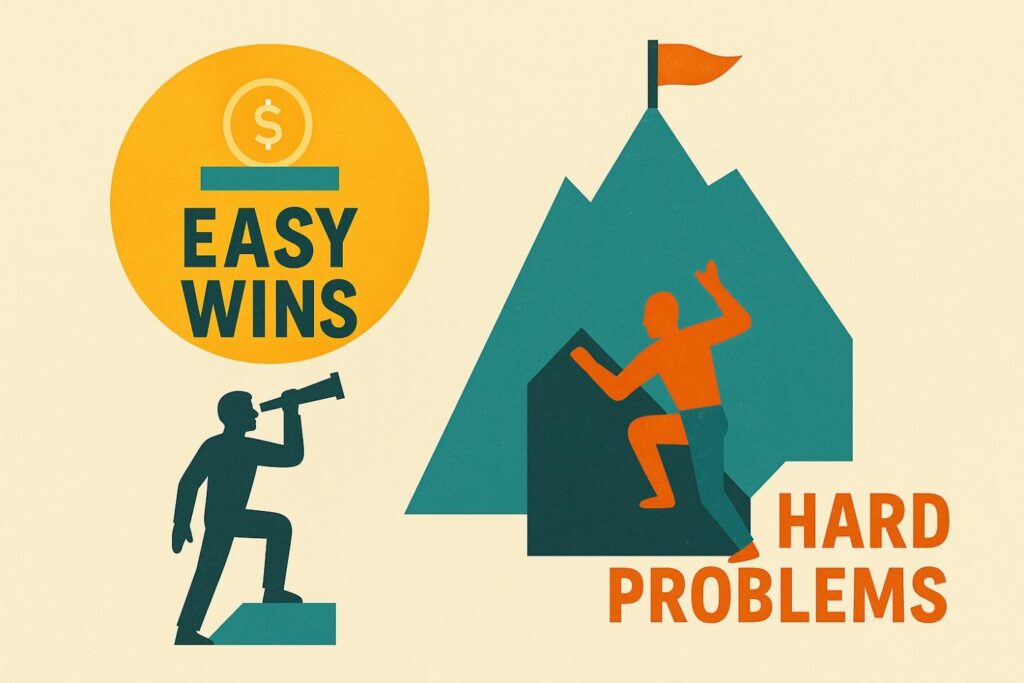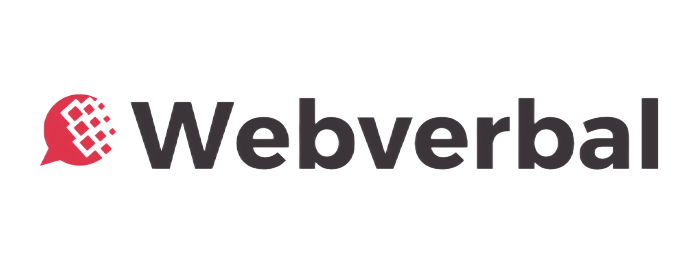Table Of Content
- The Illusion of Easy Wins
- The Easy-Problems Trap: Why Shortcuts Backfire
- Why Saying Yes to Hard Problems Creates Real Entrepreneurs
- The Contrarian Truth: Traction Without Depth is a Mirage
- Examples That Prove the Point
- SpaceX: The Cost Barrier of Space
- Tesla: The EV Adoption Challenge
- Zerodha (India): Democratizing Finance
- Udaan: Fixing B2B Commerce
- Why Founders Fear Hard Problems (And Why That’s a Mistake)
- The Founder’s Growth Journey: From Operator to Visionary
- The Contrarian Framework: Choosing Hard Problems Wisely
- Easy Wins vs Hard Problems: The Real Tradeoff
- Conclusion: The Real Question for Founders
- FAQs
The Illusion of Easy Wins
Startup culture loves to preach the gospel of “quick wins.” The advice sounds simple: pick the low-hanging fruit, move fast, validate early.
It’s seductive because easy wins give founders instant dopamine. Ship an MVP. Get a few customers. Show early traction. Raise a small round. Repeat.
But here’s the uncomfortable truth: easy wins don’t create enduring companies.
In reality, the best entrepreneurs don’t chase easy problems. They deliberately say yes to the hardest ones.
And that’s the contrarian view few startup playbooks will tell you.
The Easy-Problems Trap: Why Shortcuts Backfire

At first glance, solving an easy problem feels logical. Less friction, less risk. But here’s what actually happens:
- Endless Competition: Easy problems attract swarms of founders. If you’re building “another task app,” you’ll compete against 500 others tomorrow.
- Shallow Impact: Easy problems lead to incremental convenience, not industry-shaking change.
- Fragile Moats: Because easy problems are easy to solve, anyone with funding or speed can copy you.
The “easy win” mindset creates a treadmill: you’re moving fast, but not going anywhere.
That’s why founders who obsess over quick traction often burn out — their companies lack depth, resilience, and differentiation.
Why Saying Yes to Hard Problems Creates Real Entrepreneurs
Here’s the contrarian edge: hard problems are actually safer long-term bets.
- Hard = Scarcity: Few people even attempt them. The courage to try is a moat in itself.
- Hard = Impact: Solving energy, healthcare, education, or distribution issues creates transformations, not tweaks.
- Hard = Moats: Difficult problems take years to solve. But when cracked, competitors can’t just copy-paste your playbook.
Easy problems train founders to optimize. Hard problems force founders to innovate.
The Contrarian Truth: Traction Without Depth is a Mirage
Investors often celebrate early traction. But traction from solving trivial problems doesn’t last. What matters is whether your problem is:
- Persistent: Will it still matter in 10 years?
- Expensive: Are customers willing to pay to solve it?
- Complex: Does solving it require skill, time, and courage others don’t have?
That’s why legendary founders aren’t remembered for their quick MVPs. They’re remembered for taking on what looked impossible.
Examples That Prove the Point
SpaceX: The Cost Barrier of Space
While most founders chased SaaS apps, Elon Musk went after the hardest possible problem: reducing the cost of space travel. People laughed. Today, SpaceX launches satellites cheaper than governments.
Tesla: The EV Adoption Challenge
EVs were dismissed as toys. Musk said yes to the hardest part — batteries, charging infrastructure, mass adoption. Now, Tesla isn’t just a car company, it’s an energy company.
Zerodha (India): Democratizing Finance
While fintech apps focused on payments, Zerodha solved a harder problem: making stock investing transparent, affordable, and accessible for retail traders. That patience created India’s largest brokerage.
Udaan: Fixing B2B Commerce
Instead of building another consumer app, Udaan tackled India’s fragmented wholesale supply chains — a notoriously “hard” sector. That bold bet turned into one of the fastest unicorns.
These stories share one truth: hard problems create iconic companies.
Why Founders Fear Hard Problems (And Why That’s a Mistake)
The startup world over-romanticizes “lean” and “fast.” Founders are told:
- Don’t waste time on complexity.
- Build simple MVPs.
- Test and pivot until something sticks.
But here’s the trap: if you only chase what’s simple, you’ll never build what’s enduring.
Hard problems are intimidating, yes. They take longer, yes. But they also:
- Attract better talent who want to work on meaningful missions.
- Impress investors who see vision beyond surface-level traction.
- Give founders narratives that resonate with media and markets.
In other words: the harder the problem, the stronger the founder becomes.
The Founder’s Growth Journey: From Operator to Visionary
Saying yes to hard problems isn’t just about the market. It transforms the entrepreneur.
- Resilience: You learn to endure rejection, setbacks, and pivots without losing belief.
- Narrative Power: You tell stories about solving meaningful challenges, not shipping trivial features.
- Credibility: Teams, investors, and communities rally behind founders tackling hard things — not easy apps.
This is why investors often say: “We bet on the founder, not the product.” Founders who say yes to hard problems show they’re worth betting on.
The Contrarian Framework: Choosing Hard Problems Wisely
Not every hard problem is worth solving. Here’s a framework:
- Is it Persistent? Will this problem matter in 2035?
- Is it Costly? Are people/businesses willing to pay for the solution?
- Is it Overlooked? Are others avoiding it because it’s “too complex”?
- Is it Aligned? Does it match your skills, mission, and personal conviction?
The sweet spot is where personal passion meets systemic difficulty.
Easy Wins vs Hard Problems: The Real Tradeoff
- Easy Wins: Fast validation, shallow moats, fleeting relevance.
- Hard Problems: Slow validation, deep moats, enduring relevance.
Which one defines great entrepreneurs? Always the latter.
Easy wins build companies of the moment. Hard problems build companies of the decade.
Conclusion: The Real Question for Founders
Stop asking: “What’s the quickest way to get traction?”
Start asking: “What’s the hardest problem in my industry — and am I willing to commit to it?”
Because the founders who say yes to hard problems don’t just build companies. They build movements, industries, and legacies.
FAQs
Easy wins attract intense competition and rarely create lasting moats. Great entrepreneurs focus on hard problems because solving them builds resilience, differentiation, and long-term impact.
Hard problems are scarce, persistent, and high-impact. They often remain unsolved because most founders avoid them, which means that those who commit gain deeper moats and stronger investor interest.
Look for problems that are long-lasting, costly for users, overlooked by competitors, and aligned with your skills and conviction. These factors make the hard problem worth tackling.




